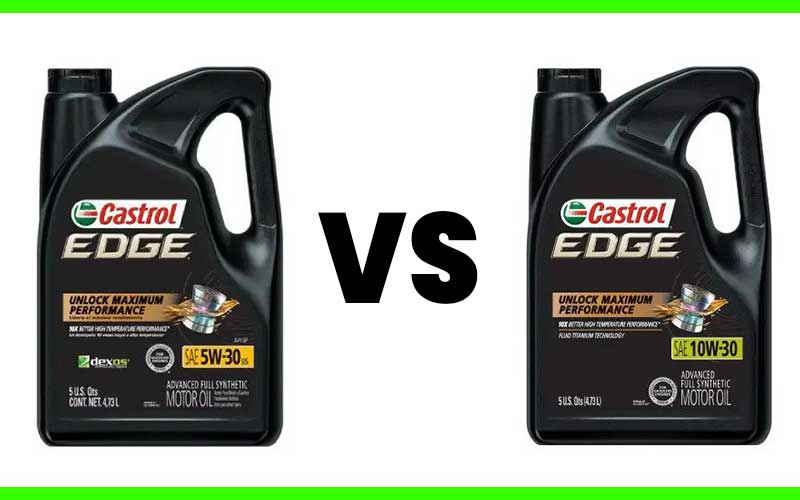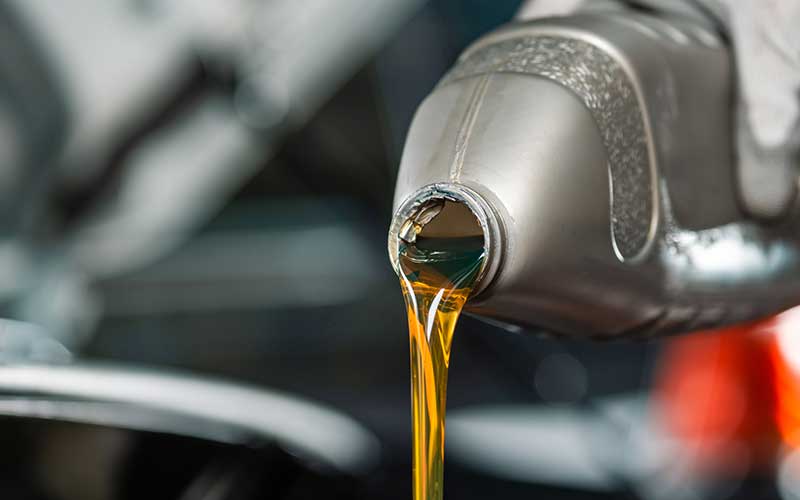When it comes to choosing the right engine oil for your vehicle, understanding viscosity ratings is essential. Engine oils play a crucial role in lubricating and protecting the engine’s internal components, ensuring optimal performance and longevity.
One of the key factors in determining an oil’s performance is its viscosity, which refers to its resistance to flow at different temperatures.
The Society of Automotive Engineers (SAE) has established a standardized system for viscosity ratings, represented by a combination of numbers and letters, such as 5W-30 or 10W-30.
In this article, we will explore the differences between 5W-30 and 10W-30 oils and answer the question: Is 5W-30 thicker than 10W-30? Join us as we delve into the world of engine oils and decipher the meaning behind these viscosity ratings.
Is 5W-30 Thicker Than 10W-30?
No, 10W-30 is actually thicker than 5W-30 at low temperatures.
The two numbers in the oil specification represent its viscosity, or how easily the oil flows. The first number followed by the “W” represents the oil’s flow at 0 degrees Fahrenheit (-17.8 degrees Celsius), known as its winter or “cold start” viscosity. A lower number means the oil is less viscous and will flow more easily at low temperatures.
So a 5W-30 oil is less viscous (or thinner) than a 10W-30 oil at low temperatures. This means the 5W-30 oil will circulate more easily around your engine when it’s cold, providing quicker and better protection.
Understanding Viscosity Ratings
Viscosity refers to the resistance of a fluid to flow. In the context of engine oils, viscosity plays a crucial role in ensuring proper lubrication and protection for the engine’s moving parts. Engine oils are assigned viscosity ratings that indicate their flow characteristics at different temperatures. These ratings are usually represented by a combination of numbers and letters, such as 5W-30 or 10W-30.
The numbers in the viscosity rating represent the oil’s viscosity at low and high temperatures. The “W” stands for winter and denotes the oil’s performance in colder temperatures. Now, let’s delve deeper into the meanings of 5W-30 and 10W-30.
Also Read: Transmission Cooler Lines Leaking At Radiator (Causes & Solutions)
What Does 5W-30 Mean?
The first number in the rating, in this case, 5W, indicates the oil’s viscosity at low temperatures. The lower the number, the thinner the oil’s consistency at cold temperatures. The “W” signifies that the oil meets specific winter performance requirements. It ensures that the oil flows smoothly and provides adequate lubrication during cold starts when the engine is not yet warmed up.
In the case of 5W-30 oil, it is thinner at lower temperatures than 10W-30 oil. This characteristic allows it to flow more easily through the engine, reducing the initial start-up friction and providing better protection to engine components during cold weather.
At higher temperatures, 5W-30 oil tends to thicken slightly, but it still maintains an optimal viscosity to ensure proper lubrication and engine protection.
What Does 10W-30 Mean?
Similar to 5W-30, the first number in the rating, 10W, represents the oil’s viscosity at low temperatures. Compared to 5W-30, 10W-30 oil is slightly thicker at colder temperatures. The higher first number indicates that the oil is less fluid or more viscous when the engine is cold.
However, it’s important to note that the difference in viscosity between 5W-30 and 10W-30 at low temperatures is not substantial. Both oils are formulated to flow efficiently during cold starts and provide adequate lubrication to the engine.
At higher temperatures, 10W-30 oil thins out to a similar viscosity as 5W-30, ensuring proper lubrication and protection even under warmer operating conditions.
Comparing the Thickness of 5W-30 and 10W-30
When it comes to comparing the thickness of 5W-30 and 10W-30 oils, it’s essential to understand that viscosity alone doesn’t tell the whole story. While the first number in the rating represents the oil’s behavior at low temperatures, the second number signifies its viscosity at higher temperatures.
Both 5W-30 and 10W-30 oils have similar viscosities at higher temperatures, making them suitable for use in a wide range of climates and operating conditions. The difference lies primarily in their behavior during cold starts.
During cold weather, 5W-30 oil, being thinner, can flow more readily and provide better initial lubrication to the engine. This property helps reduce wear on critical engine components and promotes faster engine warm-up.
On the other hand, 10W-30 oil, although slightly thicker at low temperatures, still offers sufficient flow characteristics to protect the engine during cold starts. The difference in viscosity between 5W-30 and 10W-30 is not significant enough to cause any detrimental effects on the engine’s performance or longevity.
Therefore, both oils are considered suitable for most modern engines and provide adequate protection, regardless of the ambient temperature.
Choosing the Right Oil for Your Vehicle
When selecting the appropriate engine oil for your vehicle, it’s crucial to consider several factors, including the manufacturer’s recommendations, the vehicle type, and the typical driving conditions.
- Manufacturer’s Recommendations: The best source of information regarding the appropriate viscosity rating for your vehicle is the owner’s manual. The vehicle manufacturer usually provides specific guidelines for the recommended viscosity based on the engine’s design and performance characteristics.
- Vehicle Type: Different vehicles, such as passenger cars, trucks, or high-performance sports cars, may have varying requirements when it comes to engine oil viscosity. Heavy-duty trucks or high-performance vehicles may benefit from oils with higher viscosities to handle more demanding operating conditions.
- Driving Conditions: If you frequently drive in extremely cold or hot climates, it’s advisable to consider the temperature range in which your vehicle operates most of the time. For colder climates, a lower viscosity oil like 5W-30 can offer better cold-start protection, while in hot climates, a higher viscosity oil may provide better stability and protection under high temperatures.
Consulting with a trusted mechanic or contacting the vehicle manufacturer’s customer service can provide further guidance in choosing the right oil for your specific needs.
Frequently Asked Questions
Can 5W-30 be used instead of 10W-30?
Yes, because 5W-30 is a synthetic oil and superior to 10W-30, it can be used as a substitute. However, it’s important to consider the temperature conditions and follow the manufacturer’s recommendations.
What oil is slightly thicker than 10W-30?
10W-40 is slightly thicker than 10W-30, particularly at higher temperatures. It has a higher viscosity level, providing better protection in very hot conditions.
Is 10W-30 or 5W-30 better for winter?
Both 10W-30 and 5W-30 perform well in winter, providing proper bearing tolerance and circulation during engine start-up in cold climates.
What happens if you use 10W-40 instead of 10W-30?
Using 10W-40 instead of 10W-30 in an engine designed for 10W-30 may increase friction, strain the engine, and put a heavier load on the oil pump. It is best to follow the manufacturer’s recommendations.
Is 5W-30 or 10W-30 good for winter?
Both 5W-30 and 10W-30 can be used in colder temperatures. 5W-30 has a lower viscosity level and flows better in extreme cold, while 10W-30 maintains its viscosity in colder conditions.
Conclusion
In conclusion, the comparison between 5W-30 and 10W-30 oils revolves around their viscosity characteristics, primarily at low temperatures. While 5W-30 oil is slightly thinner at low temperatures, it is still well within the acceptable range for cold-start protection. 10W-30 oil, although slightly thicker, provides adequate lubrication during cold starts and performs similarly to 5W-30 oil at higher temperatures.
When selecting engine oil for your vehicle, it’s essential to follow the manufacturer’s recommendations, considering factors such as vehicle type and typical driving conditions. Both 5W-30 and 10W-30 oils are widely used and offer reliable engine protection, regardless of their slight differences in viscosity.
Remember, regular oil changes using the appropriate viscosity oil are crucial for maintaining your engine’s health and ensuring optimal performance.


